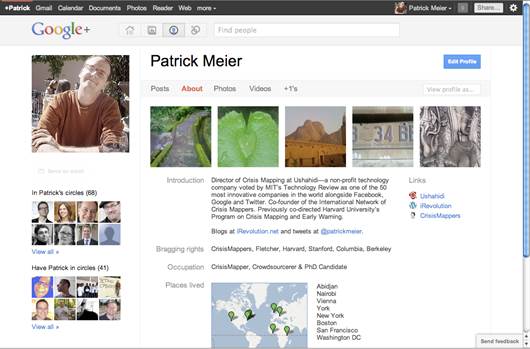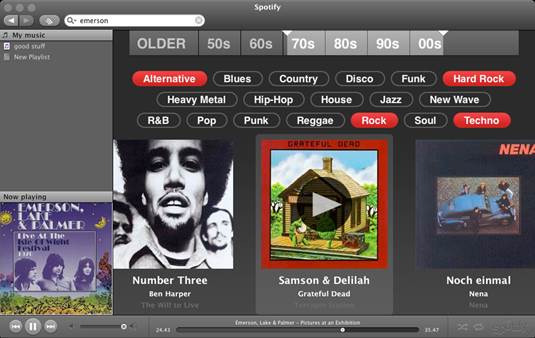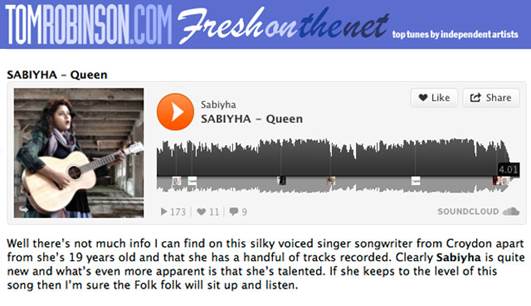Cheap technology makes it easy to
record your own music. We reveal the sites and services that can help you sell
and promote the results.
Compressed audio files and the internet
have changed the way people buy music, but parallel developments have also
changed the way music is performed, recorded and sold. Most significantly,
cheap and fast computers and peripherals have brought high-quality digital
recording out of expensive studios and within reach of musicians, who can now
turn out professional-sounding material for a fraction of what it once cost;
regular readers will know that we often cover such equipment and software in
our standalone reviews.
It’s an exciting time for musicians, who
stand to retain greater control over their music and keep more of the income
from their own work. Things are still changing, and it’s by no means easy to go
it alone, but there are well-established sites and networks to help those who
want to try. In this month’s column, we look at how to use these sites and
networks to publicize and sell your own gigs and music.
One man bands
It’s important to stress that going it
alone is unlikely to be the easiest way to make a success of music; a good
manager or record label still has the best contacts and experience to get an
act heard and booked. However, the internet does make it possible for smaller,
unsigned bands to do more than just sell a few CDs at gigs. With low recording
costs and the ability to expose their work to anyone with internet access, a
good niche band could earn enough to subsidize their hobby, while the best acts
can attract a larger audience and make a living.

Create
a websites and sign up to the usual social networks
As with any modern enterprise, the first
way to start publicizing a band is by joining some social networks and creating
a website. Facebook and Twitter can prove invaluable for communicating with
fans about gigs and releases, and for linking up with promoters, festivals,
other bands and various other useful sources. It’s also worth creating a
Google+ page, even if it only serves to improve how you appear in Google’s
search results. It’s a pain to update multiple sites, though, so decide which
you’ll use as your main internet home and make sure that you biography and
links elsewhere point to it. You can use widgets to embed Twitter content in
your own site, which helps to keep it fresh.
Distributed networking
Music promotion sites can be vital for
building a following and making sales among music enthusiasts, but they’re
unlikely to be as effective for reaching the mainstream. That’s more likely to
be achieved through music retailers such as iTunes or Amazon, or streaming
services such as Spotify. These sites and services account for a hug potential
audience, and make your music easy to find for people who may not think to look
elsewhere, but there are pitfalls, not the least of which is a loss of control
over how your music is consumed.

These
sites and services account for a hug potential audience
Large sits such as these don’t take
submissions directly from artists, instead amassing their catalogue from
distributor/aggregators such as Ditto Music, CD Baby or Tunecore. Distributor
terms vary, but generally an artist uploads their music and pays a modest
subscription to have it distributed to a core package of stores; other sites
and features are usually available as bolt-ons. As an example, Ditto Music
charges $32 to distribute an album to 20 major download and streaming platforms
and, from the second year, $23 annually to keep it there. Artists keep their
rights and royalties in this arrangement.
Whether it’s worth doing this depends on
your band, budget and ambitions. Although $23 a year isn’t much, there’s no
guarantee you’ll make it back in royalties. For each track sold on iTunes,
artists receive around 60p (depending on the territory of the sale), typically
several months later. Streaming plays generate far less income; Spotify pays only
around 0.0002p per play. Still, while having your music available to stream
could make people less inclined to find your site and buy it from you, it helps
expose you to the biggest possible audience, and opens up possibilities such as
being included in blog’s or critics’ Spotify playlists.
Self-promotion
Attracting fans and becoming successful is
still the hardest trick to pull off. It depends on hard work, plugging and
shameless self-promotion and, more often than not, luck. Being on social
networks, having a website and making sure people can find at least some of
your music is a start, but you need to give them a reason to come looking.

There
are lots of online resources, but Tom Robinson’s Fresh on the Net is a great
place to start
One obvious way to win fans is to play
live, supporting and cultivating relationships with promoters, venue managers
and other bands – you never know when they’ll need a support act or will put in
a good word for you. Search for small festivals looking for unsigned bands;
they’re unlikely to pay, but it could be great exposure. Give out cards or
flyers at gigs, including web addresses and details of releases or live dates,
and always bring CDs to sell.
There’s no harm in contacting national
music sites and specialist stations such as BBC Radio 6 Music, but smaller
bands will get further by contacting local music magazines and bloggers.
Provide a link to your music online and offer free downloads; with Bandcamp,
you can create single-use download codes and check later to see if they’ve been
sued. Sites will want a short bit of blurb about the band and the date and
location of a few gigs.
So many blogs focus on different music and
regions that it’s impossible to provide a meaningful list, but it’s worth
submitting music to the Listening Post on Tom Robinson’s www.freshonthenet.co.uk as better
submissions are offers up for discussion. The site is also full of guides and
resources to help you make the most of your talents and avoid wasting time or
money on dead ends and distractions.
Rip it up
Music sales sites such as Bandcamp.com
wouldn’t work if fans couldn’t listen to your songs before deciding to buy.
Sadly, wherever content is streamed, it could be ripped off by unscrupulous users,
possible to resurface as free downloads or ringtones elsewhere. It’s hard to
prevent this happening, but it pays to keep a look out for it: set up Google
Alerts (www.google.com/alerts) for
your name and releases to keep tabs on where they’re showing up online. This
will help you see what people are saying about you, and could show you when
sites are infringing your copyright. Keen fans may keep their eyes open on your
behalf.

A
simple Google Alert will help find people talking about you, or ripping off
your content
Reputable sites such as YouTube have
takedown policies to deal with unauthorized posting, but be wary of using them
to deal with tributes or bootlegs; it’s best to embrace them in good humor. Less-reputable
sites that are reproducing your content may respond to a polite request. If you
get nowhere, you could ask Google to remove the relevant pages from its search
results; see http://tinyurl.com/GoogleContentRemoval
for details.